[imagebrowser id=4]
There are 4 photos in the above photoset! All photos courtesy of Casson Trenor from his book, Sustainable Sushi
I’m deeply, truly, utterly and fantastically in love with sushi. Well, let me be more specific. I love GOOD sushi, none of that supermarket crap. It’s an indulgence that I allow myself once a month (it’s sooo expensive!) and use the sushi dinner as a treat for celebrations or a reward for jobs really well done (like finally ironing four weeks of wrinkly clothes that I’d been avoiding.) And when I’m at the sushi bar – you gotta watch out. Every bite is just so fresh and delightful, especially with a gentle smear of real wasabi (not the dyed horseradish) and just the slightest fish-side-down touch of soy sauce. Have you ever heard a grown woman moan at a sushi bar? I make all the other patrons blush. YES! It’s just like the Asian version of “When Harry Met Sally!”
But then I met Casson Trenor, whom I have very, very conflicting feelings for. You know the term, buzzkill? Well, Casson is my sushikill. He’s a fish sustainability expert and told me that some of my favorite sushi fishes, like salmon, bluefin tuna and unagi are a no-no for the environment.
Sure, I could have just closed my eyes, covered my ears (like my kids do to me) and just walk merrily away, but you can’t just do that with someone like Casson. How do you ignore someone who’s saves whales in the Antarctic, speaks five languages, has done marine research in over forty countries and has gone octopus fishing with holy men on the Island of Yap? Seriously!
Do you see why I lovehatelove him so?
So I told Casson that in order for me to supress my urge to hold him in a tight headlock and then do a legdrop/mandible claw combo, he’d better give me some alternatives to my beloved salmon and tuna.
Farmed Salmon: Parasites and Poison
 I love the fattiness and distinct flavor of salmon sushi! Please tell me that I don’t have to give it up.
I love the fattiness and distinct flavor of salmon sushi! Please tell me that I don’t have to give it up.
 There’s a tremendous difference between wild salmon and farmed salmon. Some of it is obvious, sure – you can tell them apart at a glance. Farmed salmon ranges from a dull brick to a startling international orange. To me, it’s the kind of color I’d want on my vest if I were biking home from a bar at 2am, not draped across my dinner plate. Wild salmon, by contrast, is a vibrant, healthy red; a color that’s striking in its vivacity and luster.
There’s a tremendous difference between wild salmon and farmed salmon. Some of it is obvious, sure – you can tell them apart at a glance. Farmed salmon ranges from a dull brick to a startling international orange. To me, it’s the kind of color I’d want on my vest if I were biking home from a bar at 2am, not draped across my dinner plate. Wild salmon, by contrast, is a vibrant, healthy red; a color that’s striking in its vivacity and luster.
But that’s not what I’m talking about. The real difference is what these fish mean to the planet.
Farmed salmon is generally raised in net pens about a twenty-second backstroke away from a Chilean beach, Canadian forest, or Norwegian fjord. These operations can have devastating effects on the local environment. Parasites build up in these farms and lay waste to local wild salmon populations, especially in British Columbia. Fish waste washes out of these pens and collects on the seafloor below, poisoning the plants and animals that are unable to escape to cleaner areas. Add this to the disease problems, potential genetic issues, and the demand for wild fish as feed (it can take up to four pounds of wild fish to produce one pound of farmed salmon!) and you have dozens of little environmental disasters, scattered up and down coastlines around the world.
My suggestion? Well, actually, I’ve got two. Wild Alaskan salmon and farmed arctic char.
Sustainable Salmon: go wild, baby
Wild Alaskan salmon are from fisheries that continue to set examples for fishery management around the globe. Strong populations, sensible quotas, and effective enforcement combine to not only protect these salmon runs, but to also provide seafood fans with a delectable fish that’s high in omega-3s, low in mercury, and nothing short of gorgeous on the plate.
Sustainable Arctic Char: a great alternative
Arctic char is an up-and-comer that is set to change the way we think about fish farming. Instead of using ocean net pens, arctic char farmers prefer closed inland systems that prevent any parasites and diseases from spreading to the surrounding environment. Waste is contained and filtered out in an eco-friendly manner, and the feed demand is much less than that of farmed salmon. On top of it all, farmed arctic char has a beautiful red flash and a delicious, light taste and texture. This fish is not to be missed.
Next time you’re at the sushi bar, dump the farmed salmon for either of these other two options. You won’t regret it, and the oceans will thank you.
Bluefin Tuna: in serious trouble
 Okay, parasitic waste…so totally gross! I guess that means I have look for wild salmon at the supermarket too. What about the very popular tuna?
Okay, parasitic waste…so totally gross! I guess that means I have look for wild salmon at the supermarket too. What about the very popular tuna?
 Jaden, what are you doing? Is that toro on your plate? Ok, we need to have a little chat. Didn’t you read my book?
Jaden, what are you doing? Is that toro on your plate? Ok, we need to have a little chat. Didn’t you read my book?
Bluefin tuna is in trouble. Serious, serious trouble. Like slutty chick in a horror movie kind of trouble. It’s gonna be really tough for bluefin to get out of this situation alive.
All over the world, there are people out to catch bluefin tuna. Longliners, tuna ranchers, seiners, and even rifle-toting snipers are out for blood.
Our insatiable lust for the fatty, supple belly flesh of this magnificent animal is driving it to the brink of extinction.
On top of this, the number of other animals that are killed and discarded by rapacious bluefin hunters is simply incalculable. Hundreds of thousands of seabirds, sharks, and turtles have been dumped over the sides of longline vessels for no other reason than unadulterated greed.We have to give this creature a break and let it recover. This animal is a top predator with an incredibly important role to play in our ecosystem. Lose the bluefin, and we very well may lose the oceans. So what do we do? Well, one answer lies in one of the bluefin’s close cousins – the albacore.
Sustainable Albacore Tuna: rosy, delicious alternative
Many albacore tuna populations, especially in the North Pacific, are strong and well managed. These fish are often caught with handlines that keep bycatch down and quality levels up. But the best part? Flip one over, close your eyes, and take a bite out of the belly.
Albacore toro is gorgeous. Sleek, rosy-colored morsels cut from the belly of this fantastic fish can grace nigiri rice with just as much class and luxury as any piece of bluefin. Simply put, there is no longer a reason to force the planet to pay for our toro addiction. Swap bluefin out for albacore and the oceans survive. Otherwise, well… you get the picture. It’s that simple.
 So you better come visit me in Tampa, Florida and take me on a sushi tour to help me break my bad sushi habits.
So you better come visit me in Tampa, Florida and take me on a sushi tour to help me break my bad sushi habits.
 Deal. You’re on. May 2009?
Deal. You’re on. May 2009?
Sustainable Sushi: Saving the Oceans One Bite at a Time
 Okay, everyone – let’s help Casson spread the word…he’s got a new book out called Sustainable Sushi, a paperback guide with great photos and commentary of good fish/bad fish. All the fish is color-coded, green/yellow/red so you can see at a glance on what to eat.
Okay, everyone – let’s help Casson spread the word…he’s got a new book out called Sustainable Sushi, a paperback guide with great photos and commentary of good fish/bad fish. All the fish is color-coded, green/yellow/red so you can see at a glance on what to eat.
—-
On Casson’s website, he’s got a great chart of fish, photos and ratings. Go see what to eat!
How to make sushi rice
In a future column, I’ll show you how to make handrolls in a step by step photo sequence. But for now, here’s a recipe for sushi rice. If you can get your hands on fresh sushi-grade fish (yes, Casson, I mean SUSTAINABLE fish) you can always make chirashi, which is simply sushi rice in a bowl and slices of fish draping on top. To show you the difference between farmed and wild salmon, here’s a photo from Casson’s brand new book, Sustainable Sushi. The wild salmon is in the foreground, and it has a smooth, beautiful reddish tinge. The farmed salmon is in the background with it’s Nemo-like stripes.
2 cups short grained white rice
3 quart heavy bottomed pot with tight fitting lid
2 cups water
sushi dressing (see below)
Put the rice in the pot and fill with cool water. Swirl the rice with your hands for a few seconds and dump out the milky water, keeping the rice grains in the pot. Repeat 3 more times, until the water is a bit more clear. Let the drained rice stand for 10 minutes. Add the 2 cups of water to the pot and cover with tight fitting lid. Cook on high heat for 5 minutes. Immediately turn heat to low and cook an additional 18 minutes. Turn off heat and let sit (still covered) for 5 minutes to finish steaming.
For the sushi dressing
5 tablespoons unseasoned rice vinegar
2 tablespoons sugar
1/2 teaspoon salt
Mix all ingredients in a bowl and stir to dissolve the sugar and salt. If you are using “seasoned” rice vinegar, omit the sugar.
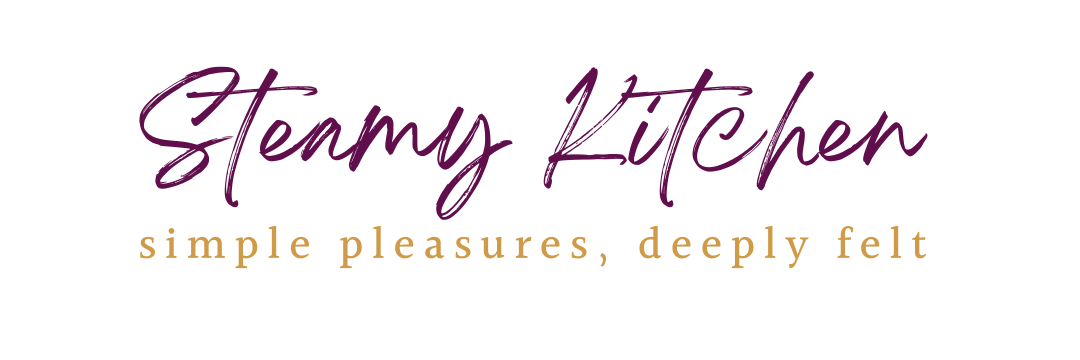
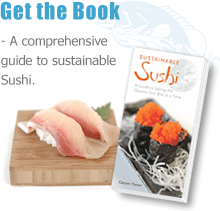
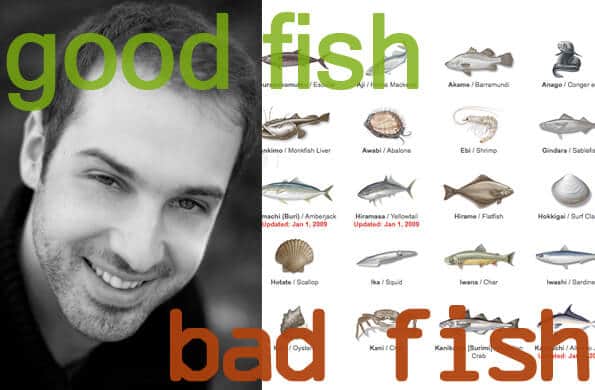
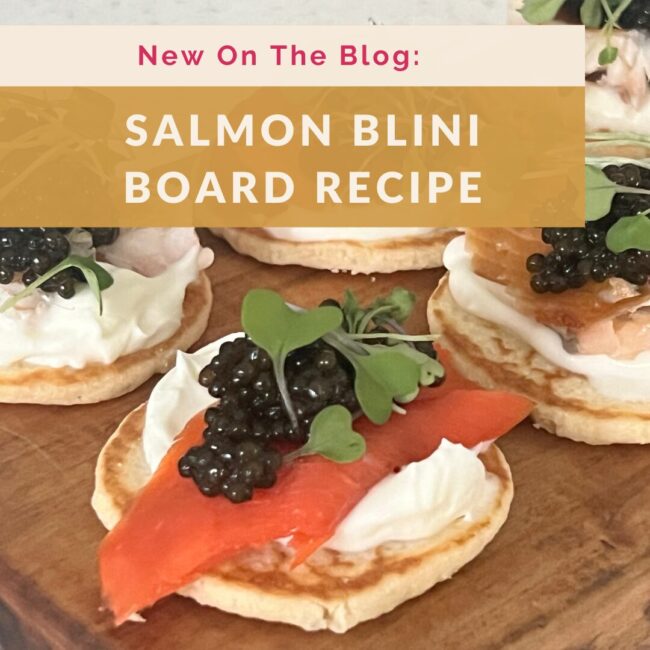


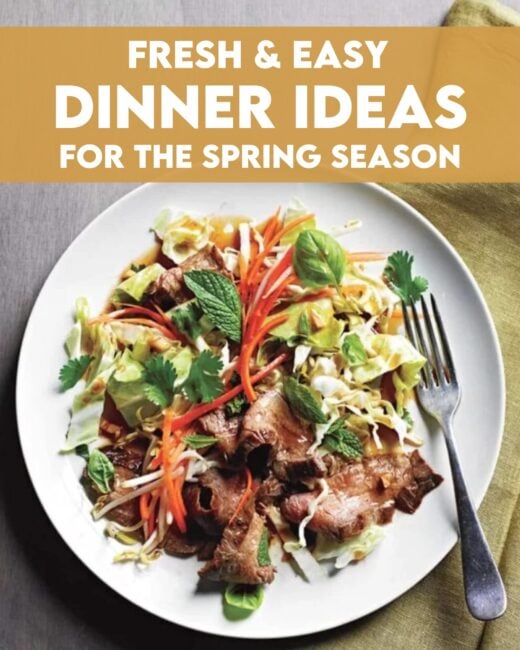
Show me the science to prove your acusations. Raised salmon do not have a negative effect on their environment. There is no proof. The exact opposite is the truth. Enviromentalists or purists as I like to call them would have you believe otherwise. Show me the proof. Fact is : the enviromental impact is positive around these salmon farms. Salmon farmers are extremely enviromentaly concious. Salmon are very sensitive to water quality. If conditional are bad Salmon die. If Salmon die farmers make no money. It is simple economics with a little greed mixed in. Farmers must make sound environmental decisions in order to keep their Salmon alive in order to make money. You can’t cheat the system. If you @&$” up your profits die. Support your farmers. They are more enviromentaly concious than you are.
Jaden,
Have you thought about contacting the restaurant chain Bonefish Grill to ask about their policies of serving sustainable fish? You know they are right in the same neighborhood as you (well, Tampa isn’t that far), and you have such a big impact with your highly rated website and millions of fans. I’m thinking specifically of salmon, but they also serve many other fishes that are on the “bad fish” lists. I’ve asked the servers when I dine there to inquire where the salmon is from, and most of them insist it is only the best freshest fish. But that doesn’t answer the question, does it?
A word from you might go along way toward educating a chain that educates millions of customers.
Just a thought… 🙂
Thank you for posting this very informative!
this is a great post, Jaden. My only problem: where would I find the mentioned fish here in Austria. I’m prepared to make my own sushi, so no problem there… but the question is usually where the hell to shop. I want to save the world too 🙁
wha? no unagi?! my son is addicted! what’s a mom to do?
Thanks for sharing this great info Jaden. I didn’t know that us British Columbians are such a large part of the problem. That’s disappointing.
This is a fabulous post! I agree with you exactly in terms of not wanting to give up sushi and ignore the problem. But I have to say I had wild salmon one time when I was in Seattle (baked, not sushi style) and it did not taste the same to me. Hopefully it does in sushi version!
I too am a sushi lover! And YES I do the whole moaning, toe-curling, and eyes-closing bit at the sushi bar 🙂 I love a lot of food but none can give me food-zen like sushi…pleasure and bliss and this hypnotic peaceful feeling…
Thanks for sharing this information! I know what you mean by sushikill but if we want to be eating it foreverandeveramen then we should listen 🙂
It’s true — Casson is a total kill-joy, but in a good way. Hah! If you love sushi, you love it enough to make sure your favorite species are around for a long time to come. Casson is a wealth of information. I never cease to learn something when I talk with him.
@mick
Farmed salmon should be done inland in artificial lakes. Out in the ocean they cause too many problems. I have been out to the salmon farms as well, and don’t have a problem with farmed fish – just that it be done in “isolation” from wild stocks.
awww the unagi no-no makes me sad!
I just want to throw another fish into the mix – Kona Kampachi.. these guys are doing great things off the coast of Hawaii, and the fist is just incredible. I love it raw. (www.kona-blue.com) – not to be compared with Hamachi, or Japanese Kampachi.
These guys do completely sustainable, waste free aquaculture, far from the dodgy salmon farms mentioned here. I am generally against farmed seafood, but these guys do it right..
(and no, I am not affiliated with them).
BTW – the two salmon examples in the photo are not the same species. If a comparison is to be made, the species must match!
Readers remember, all aquaculture is not the same and the topic is far more complex than this simplified story – the key is to identify the responsible sources of farm raised salmon.
Wild salmon stocks are clearly in peril, and damning all farmed salmon increases the problem because shoppers act on emotion (and retailers on greed – that is why much of the ‘wild’ salmon on the market is actually farm raised). Please be more responsible with the pen, stories like this can do more harm than good!
While the sentiment is correct, all the facts are not! I’ve personally been to the salmon farms in BC to study what is going on and parasitic waste is quite controlled. The farms are very wide spaced, the feeding is carefully controlled and any wastes that accumulate below the pen are vacuumed up by a diver and responsibly handled on a weekly basis. We don’t need more mislead hype from a distant observer – folks are confused enough as it is!
Honey, i’m 1000% sure that Casson is qualified to speak about the salmon farms. Have you read the thousands of articles on the dangers of salmon farming? I specifically formatted this post – he said/she said because these are written quotes from Casson himself. I didn’t want to misinterpret his information. ~jaden
Hey wanna join us on a sushi field trip?
TOTALLY! I’m so in. ~jaden
Albacore is AWESOME – and fresh salmon right off the boat – delish…can’t wait until the men and boys go out fishing again 🙂 Oregon salmon is harder to come by these days than Alaskan, but it’s SUPER – and tuna season is approaching!
Jaden –
Good evening. This is a great post. Thank you so much.
Wow, this is soo neat. We just came back from San Francisco and at the bay aquarium we got a pamphlet about sustainable fish – what to eat and which ones to avoid. I think its great that Carson has a book out about the same thing!
Great post Jaden! I love all of the info in this and I so believe in sustainable eating. If we aren’t responsible who will be?
I downloaded the sustainable sushi guide from the Monterey Bay Aquarium
http://www.montereybayaquarium.org/cr/cr_seafoodwatch/sfw_sushi.aspx
but to be honest, when we go out for sushi (a twice-a-year experience), it’s for REALLY GOOD sushi and it’s “omakase” which means chef’s choice. So if it’s really chef’s choice, who are we to tell him not to give us toro?
Très intéressant article. Merci beaucoup!
thank you for posting such an enlightening article. I have to admit, that while I prefer wild salmon– I’ve bought the farmed salmon, to save money. Now, I better understand why I shouldn’t. I never knew the facts.
consider me “enlightened” and committed.
Thanks again.
What a great post, Jaden…I also LURVE sushi, but had no idea about the effects on the environment. I’ll have to think the next time we have sushi…
If you love bluefin tuna and want to help increase awareness visit http://www.savethebluefin.com. Join sushi lovers, scientists, CEOs and house wives in having a voice. As Carsson says the bluefin needs people to care right now. Enjoy the sushi and try albacore over bluefin. If you try that and convert we would love to hear about it on the site.
Jaden, thank you for all of the valuable information. Casson’s book looks like a fantastic resource.
Heidi
I can relate locally to the British Columbia farmed salmon debacle, it is really raising havoc on wild salmon species and is being fought at a grass roots level. I really appreciate you posting about this.
There is a petition right now that is gathering many users, that if anyone wants give their voice it would be greatly appreciated.
The community groups behind this fight against big business, government and other powerful interests use Google’s petition system here where it explains more about this fight and what is at stake:
http://spreadsheets.google.com/viewform?formkey=cEkxX3p3MGFBbWNVVGNVU3lxQnBwQmc6MA.
Also – the organization Adopt a Wild Fry has a web site that discusses the issues more as well: http://www.adopt-a-fry.org/
Farmed salmon is a 450 million dollar business in BC, raising Atlantic salmon who spread parasites, disease and worse from their sea pens.
Thank you.
Cameron S.
Excellent post, Jaden. I think most of us care about but just don’t know the consequences of our culinary cravings. Thanks for helping us make better decisions. Todd.
Sorry, the link is http://tinyurl.com/6b5mh6
Great post. I didn’t know that arctic char was okay. I’m pretty picky about farmed fish. This article might also interest you, about Alexandra Morton trying to save the wild salmon on the BC coastline:
Jaden
Thank you for posting this. This was very informative – I gotta tell ya I heart sushi. I know *should* care and I *do* care but I have a hard time giving up my sushi….
this was educational, thanks Jaden (and Casson)
So which salmon is wild and which is farmed? If I had to guess, I’d tag the farmed salmon as the one in the back with the stripes… it’s one I’ve seen waayyyy more often.
Farmed salmon is nasty. Thats not much of a sacrifice. If you grew up with copper river red and troll-caught king at the local supermarket, farmed salmon has all the appeal of raw chicken.
Giving up bluefin… that will be harder.
Do you really iron??? Reallllllly?
I love sushi too. It’s a pretty new thing to me, because before I only came across not so good ones, I guess. Yeah, totally good. What I feel good about sushi is the small portions of fish, unlike eating a steak or fillet which is usually 6-8 oz. per person. So it makes me feel good and respectful to the fish (does this help?)
My guess for picture #1 the fish in the front is wild and the one in the back (with “stripes”) is farmed. Am I right?
I always wanted to learn how to make sushi. Looking forward to your series. Could you also explain about the needed tools? Thanks.
Nurit
So.. What I’m reading is: time to get some bluefin before its too late?
😉
FASCINATING!!!
Let me know if you’re ever in Chicago… we’ve got killer sushi here 🙂
Great post, love the work he’s doing. Not to steal thunder but here’s an often updated resource (for those of use care):
http://www.montereybayaquarium.org/cr/seafoodwatch.aspx
You MET him? You lucky, lucky woman! I just gave away a few copies of his book on Sushi Day, and was honored that he stopped by and commented, but… you MET him?! *sigh* You get all the good hookups, don’t you. 😉
Fascinating article, Jaden. You’d love to head-lock my man too! He specializes in quantitative population modeling for endangered species and sustainable fish populations in Seattle. Marine mammals are his current focus.
Bamboo sushi (in Portland, Oregon) was the first (and only?) restaurant in the US to serve sustainable sushi. Their fish are caught from certified wild fisheries, and each can be traced back to its origin.
http://www.bamboosushipdx.com/
I don’t care – I’ll continue eating all kinds of sushi and sashimi. 😛 Yes, I too use a sushi outing as a dinner treat. 😀
There’s a cute sushi restaurant in Lucerne called Sushi Kaiten with a blue water canal for a ‘conveyor belt’ containing little sailboats each with two plates of sushi/sashimi ‘cargo’.
Thank you for this post, Jaden! I just learned soooo much and am definitely getting Casson’s fish chart. How can I not, after reading this?
You’re awesome!
This is an *awesome* post and public service message, babe. Thank you for putting up this great info and for introducing us to Casson. From one sushi whore to another – xxoo.